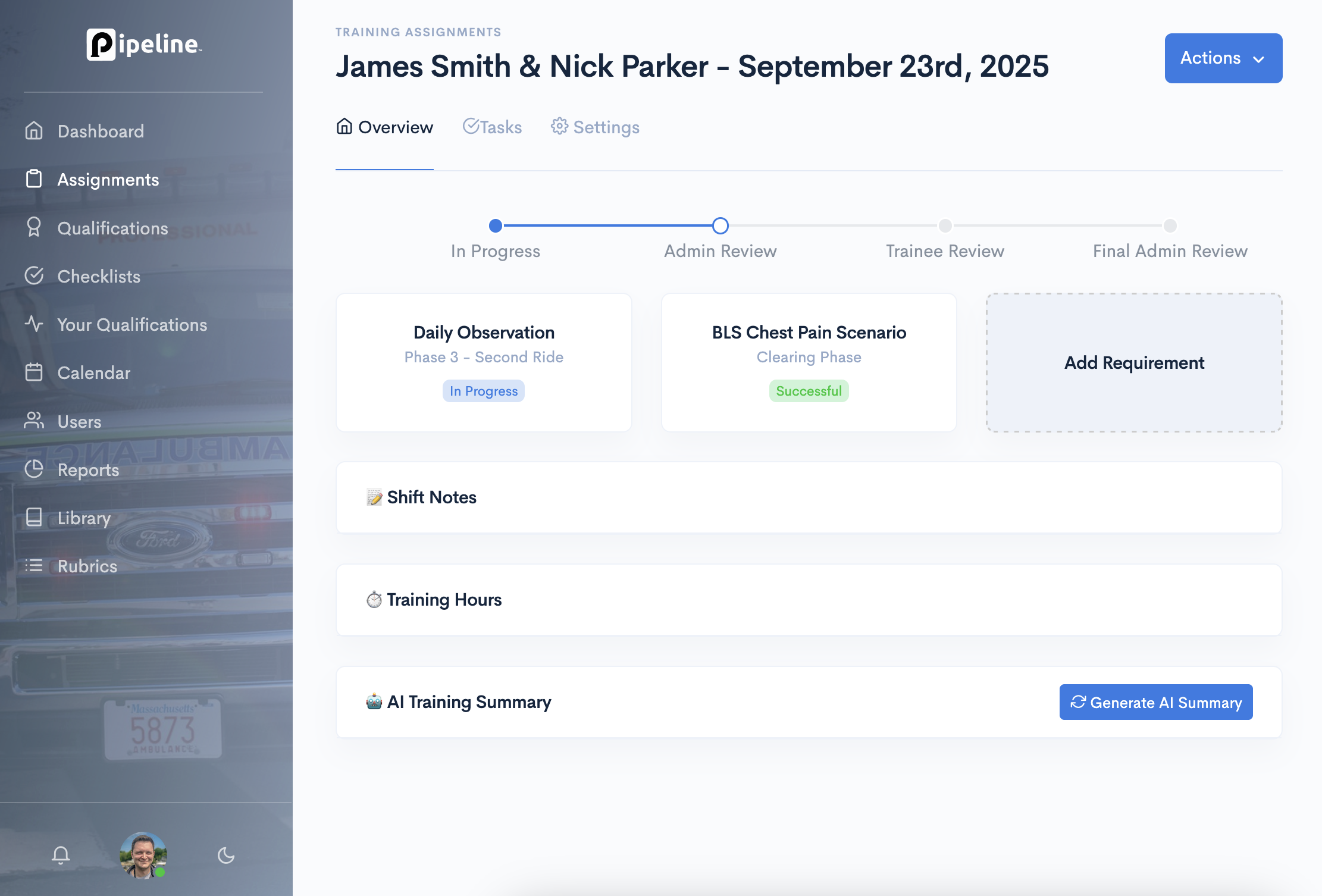Traditional QA only scratches the surface. Pipeline creates comprehensive after action analysis that captures clinical and operational insights while the incident is fresh, involving all stakeholders in a safe learning environment that drives actionable training outcomes.

Traditional QA focuses on clinical review after the fact. Organizations need comprehensive reflection that captures operational challenges, involves all stakeholders, and transforms incidents into training opportunities while memories are fresh.
| The Old Way | The New Way |
|---|---|
|
|
|
|
|
|
|
|
|
|
|
|
|
|
|
|
|
|
QA only reviews clinical decisions after the fact, missing operational challenges and system factors.
Comprehensive after action analysis captures clinical, operational, and system factors while the incident is fresh.
Post-incident reviews happen weeks later when details are forgotten and stakeholders unavailable.
Immediate structured debriefs with all stakeholders while memories are accurate and complete.
Incident analysis relies on subjective accounts with no systematic way to identify actionable improvements.
Technology-driven analysis tools that quantify findings and generate specific training recommendations.
Blame-focused culture prevents honest reflection about what really went wrong.
Safe learning environment that focuses on system improvements rather than individual fault-finding.
Incident learnings exist in isolation and never inform future training or competency development.
Direct integration with training programs to ensure incident insights drive ongoing competency requirements.
Only clinical staff participate in reviews, missing crucial perspectives from operations, dispatch, and leadership.
Multi-stakeholder involvement ensures complete coverage of all factors that contributed to the incident.
Go beyond clinical review to include operational challenges, communication breakdowns, and system factors. Multi-stakeholder input ensures nothing gets missed while the incident is still fresh in everyone's mind.
Use structured analysis tools to turn individual perspectives into quantifiable insights. Identify patterns across incidents and translate findings into specific training recommendations.
Build psychological safety that encourages open discussion about what went wrong and why. Focus on system improvements rather than individual blame to drive meaningful change.
After action analysis is about more than reviewing what went wrong - it's about creating systematic learning that prevents future incidents and improves organizational resilience.
We're experts in helping public sector organizations implement initiatives that drive real results.
